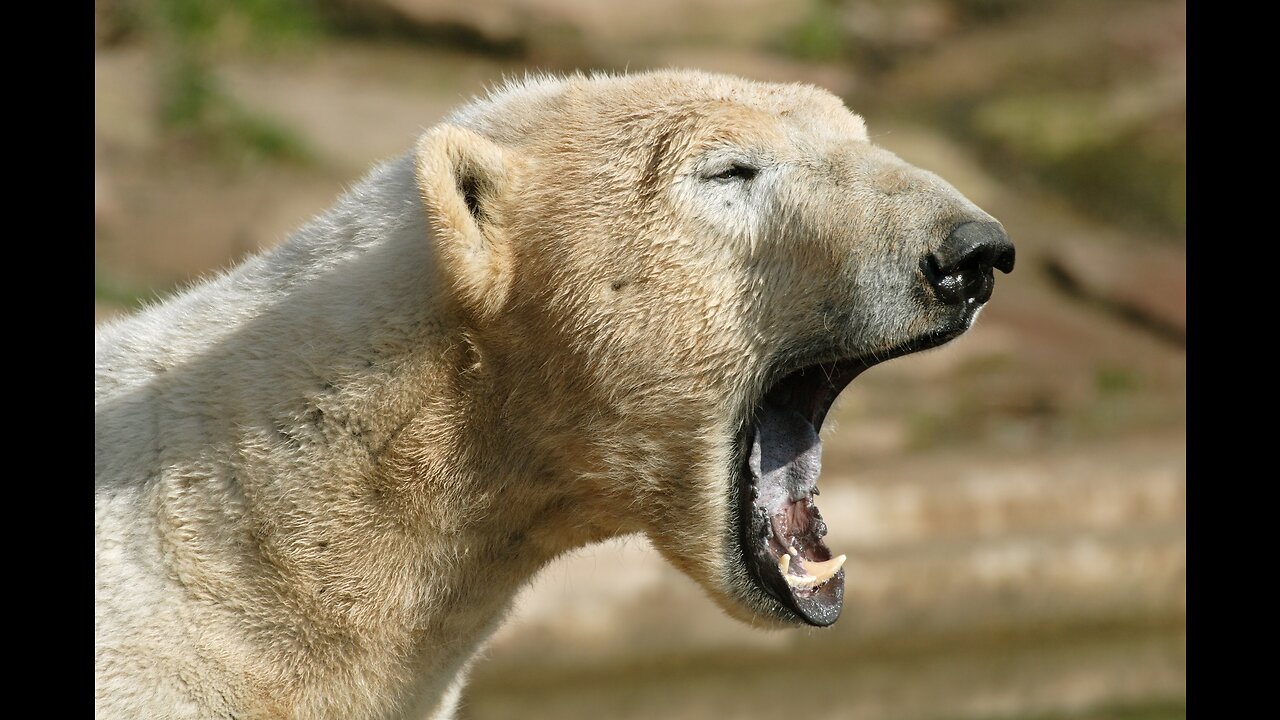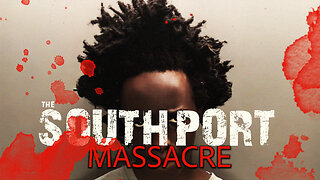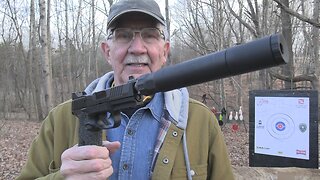Premium Only Content

This Polar Bear Killed Or Injured Four People In Svalbard, Norway
Welcome back to Scary Bear Attacks! Today’s episode takes us to the frozen north, to the icy island of Svalbard in Norway. On this Island, there are peaks that stretch into the clouds and glaciers speckle the land even in summer. There is no tall tree or shrubs that grow on the ground, but lichens decorate the rocks above 1100 feet in elevation. There are sea birds like the Kittawake, Little Auk, and the Black Guillemot that feed in the seas but nest and rest on the rocky shoreline and cliffs. Land animals include the Arctic Fox, Reindeer, and Polar Bears. It is in this bleak and difficult environment that our episode takes place.
In the 1930’s The nonprofit British Schools Exploring Society (BSES) was commissioned to give young explorers a sense of adventure and appreciation for the wilderness. The BSES planned trips to Svalbard, Norway to experience an ecologically sensitive but important ecosystem and study how scientists can help preserve similar places.
The expedition allayed parents' concerns regarding safety by pointing out that they would be taking many safety measures on the trip. The cost of the trip was expensive for families so it was a safe assumption to believe the organizers in their precautions.
The group was equipped with a Mauser 98K rifle from world war two stock. The rifle was very old but was still functional. They didn’t need a back up rifle as this one was thought to be in good shape.
The expedition also had an electric fence that would be erected around the perimeter of the camp each night to deter bears from entering while they slept. As the explorers began to set up the electric fence, they soon realized they didn’t have the brass fittings to properly attach the wire to the posts and one of the posts needed was missing. The leaders of the group instructed the boys to set up a triangle shaped perimeter with the fence, instead of the square shape as described by the manufacturer. The leaders also urged the boys to improvise and use paper clips to hold the wire in place and develop their ingenuity.
The group additionally had flares that would be used to ward off bears, as well as signal for help in times of distress. They didn’t really cover the use of the flares with the explorers very well, as they didn’t have enough to equip each explorer with them anyway. The leaders knew they would be close to the explorers and would access the flares if needed, so it wasn’t a big issue.
On August 4th of 2011, 17-year-old Horatio Chapple discovered a series of massive footprints just outside of their camp. One of the students, Lauren Beech, said, "one was quite distinct and I remember many of us shooting photographs." The group of students had traveled to the Norwegian island of Svalbard as part of a school field trip. "Possibly naïve, but I do recall thinking, "Wow, it's a polar bear footprint." Still, I don't think I became more anxious as a result of it."
Her friend and fellow explorer, Horatio was an exceptional explorer and well liked by his group. He was enrolled at Eton College and exemplified the character and values the Young Explorers demanded of its members.
After finding the polar bear track in the snow, the leaders of the expedition considered setting up a bear watch for the night. After some deliberation, they decided it might expose the explorers to undue stress and lead to illness or poor performance the next day. The leader of the group Michael Reid indicated that when he was an explorer he himself had fallen asleep during a bear watch when he was 18 years old, acknowledging that a bear watch is subject to human error and not perfect. They opted to rely on their electric fence and other bear deterrents to keep their camp safe for the night. The entire camp retired for a peaceful night's rest in the warmth of their tents and sleeping bags looking forward to the adventure the next day would bring.
The bear was able to sneak into the camp at around 7:30 a.m. on the morning of August 5th. It was starving and very underweight. It had to have something to eat if it was going to make it until fall. As the bear approached the camp, it tipped over a post that held the electric fence upright. After the fence collapsed, as the bear walked through the camp it became particularly interested in one of the tents and began to investigate.
Scott Bennell-Smith was sleeping while in the tent when the tent shook violently, waking him. He, Patrick Flinders and Horatio shared the tent and Scott thought that the expedition leaders were trying to wake the boys for the day. As he sat up, he saw the tent bow in and a polar bear's razor sharp claws poked through the tent material and ripped 5 clearly cut tears through the fabric. He began to panic but before he could react the bear quickly swatted him on the back and head gashing his flesh everywhere the claws touched him.
During the commotion of the initial phase of the attack, Patrick sat up to see what was going on and was promptly swatted by the polar bear as he tried to hide, curled up in a ball. The swat fractured his skull.
Horatio had woken up and began to scramble from the tent door. Before he could stand up the bear pounced, knocking him to the ground with the force of its paws. A bear weighing 900 pounds can impart several tons of force using its weight and the power of its paws when it pounces with them on its prey. The power in this phase of the attack smashed Horatio to the rocks and crushed his body. After pressing him to the ground, the polar bear began applying its 1400 pounds of bite force to the young man's neck. As it twisted and pulled on Horatio’s neck, it shifted its attack to his face. It bit onto his face and crushed his bones and ripped his flesh with its claws while doing it. Polar bears have the strongest bite force in the bear family, and the bite rent flesh and crushed bones as it tore Hortatios face. It ended its attack on him by crushing his skull between its jaws, extinguishing his life.
Patrick indicated that he watched as the bear pulled someone from the remnants of the tent by biting the person by the head. He immediately hid back under the blankets, incredulous at the carnage that was occurring only a few feet away from him.
In a nearby tent, another explorer named Matthew Burke said that he sprung to his feet when he heard the cry, "Bear, bear!" When he glanced outside, he saw Horatio being attacked while wearing just boxer shorts. Burke indicated that he saw the bear stand up and drop down onto Horatio with its paws. He then heard the bear dash off through the crunching snow toward someone else. As he looked outside of his tent, he could see the team's Scientific Head, Michael Reid aiming the camp’s rifle in the bear's direction but the rifle wouldn’t fire. He watched as Reid ejected malfunctioning shell after malfunctioning shell onto the ground, and then discarded the useless rifle. The expedition had apparently not taken into account the fact that a rifle left in extremely cold temperatures with the ammo in it, can create a particularly cold environment causing the powder inside to be ruined through sweating. It occurs when ambient temperatures drop enough to cause the water vapor inside the shell to freeze, then thaw ruining the powder inside.
Reid described his experience this way. He emerged from his tent by the cries of “Bear, Bear!” from the boys in the expedition. He grabbed the rifle and aimed it at the bear and pulled the trigger. The rifle didn’t fire so he ejected that round and chambered another. Reid yelled, “It's not working!” as he pulled the trigger yielding a click and the rifle didn’t fire this time either. He tried to fire and ejected each shell in turn, probably 5 shells,
After Reid’s escapades with the rifle, the polar bear turned its attention to him. It ambled up to Reid and knocked him to the ground with a single blow from its paws. It quickly locked its powerful jaws around Reids head as he tried desperately to gouge it in the eyes. Reid attempted to dig his fingers into the bear's eye sockets. His lack of success in this effort may have been due to polar bears having a special guard over their eyes called a nictitating membrane which allows them to see underwater and protects their eyes from foreign objects entering or damaging them.
It was then that the expedition guide, Andrew Ruck exited the leaders tent he shared with Reid, from the rear exit. He ran up to the bear and yelled, as he threw rocks at it, aiming for its head. The bear then pursued Ruck a few times around the tent. The bear knocked Ruck to the ground and put its paws on each of his shoulders. The bear lowered its head and looked directly into Rucks eyes. The bear then slashed his face with its claws and opened its mouth wide to bite his head, but Ruck dodged to the side, narrowly avoiding a fast death.
By then Reid had picked up some of the rounds he had dropped on the ground and reloaded the camp rifle. He aimed again at the bear and this time fired into the bear at close range and the bear collapsed to the ground, finally dead.
With the bear now no longer a threat, Burke began the difficult work of calming the explorers and assessing injuries to them.
In total, the members of the expedition suffered the following injuries: Scott Bennell-Smith suffered gashes on his head and back, Patrick Flinders suffered a fractured skull, Ruck was gashed on his face and Reid was bitten about his head. Promising intellectual and Youth Explorer, Horatio Chappel died from serious wounds to his head, neck and face immediately after the attack.
After the bear was killed, an examination showed that the 24 year old male had terrible infections in its jaws and had worn down teeth. It was emaciated and extremely underweight.
After reviewing the conflicting and confusing details of this incident, I am left with a few questions that need your perspective. First of all, Why do you think the expedition didn’t take a careful inventory of its protective equipment? Next, what do you think could have been done given the knowledge of the inadequate protective equipment to avoid the polar bear attack? Finally, Given how rare polar bear attacks are statistically, were the expedition leaders realistic in their lack of anticipation of a bear attack? Post your comments in the comment section below and let’s talk about it.
-
 2:32:17
2:32:17
Sgtfinesse
2 hours ago💥Sunday Morning Hunt for Featherweight Artifact | New World PVP Server: Sclavia
11.8K -
 11:25
11:25
Film Threat
18 hours agoLET'S DISCUSS THE 2025 OSCAR NOMINATIONS | Film Threat News
13K6 -
 13:07
13:07
DEADBUGsays
3 hours agoThe Southport Massacre, The Great British Cover-Up
16.4K12 -
 25:26
25:26
hickok45
6 hours agoSunday Shoot-a-Round # 265
13K25 -
 30:55
30:55
Tundra Tactical
17 hours ago $15.96 earnedFaith, Family, Gun Rights : Tundra Tactical Interviews Erich Pratt Vice President Of GOA
88.5K17 -
 24:08
24:08
MYLUNCHBREAK CHANNEL PAGE
1 day agoUnder The Necropolis - Pt 4
229K62 -
 1:26:44
1:26:44
Tactical Advisor
1 day agoTrump Starting Strong/Shot Show Recap | Vault Room Live Stream 015
121K10 -
 49:13
49:13
SGT Report
1 day agoGILDED CAGE: A.I. PRODUCED MRNA VACCINES & THE ROAD TO HELL -- Sam Anthony
73K401 -
 17:00
17:00
BIG NEM
16 hours agoI Spent 10 Years Making a Movie About a 40 Year Old VIRGIN
9.42K -
 17:01
17:01
RealitySurvival
12 hours agoRussia's Anti-Satellite Weapon Could Disable Your Commuter Car!
7.23K